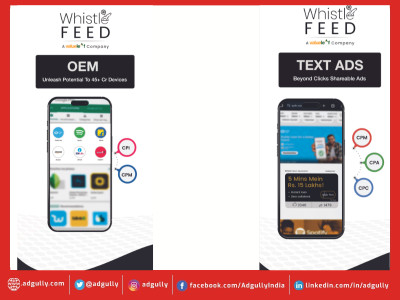Is Contextual Advertising More Than Just a Cookie Substitute?
Authored by Pankaj Sharma, Country Head, MGID, India.
Early in the year, Google announced that internet users had raised concerns about privacy and security on the internet and in response to that it is going to restrict the number of advertising cookies on websites accessed via its chrome browser. It further said that it would completely phase out third party cookies in the next two years. Other browsers and operating systems such as Apple, Microsoft and Mozilla have already banned third party cookies due to similar privacy concerns.
For users this comes as a welcome relief, but what does this mean for advertisers? This means advertisers will no longer be able to track users across different sites and third party data would be extremely difficult to target. The bigger concern remains what can be the alternate to cookies which would be effective in not just targeting the right audience, but also making the campaigns effective with a positive ROI.
Contextual based targeting strategies seem to be the solution that advertisers are turning to. Instead of matching campaigns with the profiles of users, contextual matches the campaign with the website or webpage and its content. By adopting such strategies, the digital advertising industry can look toward developing a privacy-first and brand safe approach of reaching the audience and engaging them with the brand’s message.
From third party cookies to first party cookie data
Advertisers have relied on third party cookies for almost a decade. The third-party cookie data allows you to learn about the pattern and overall online behaviour of web visitor which helps in building their online profiles. Using this information, you can build a retargeting list of audience that can be used to send ads to these visitors or other people on the internet with similar profiles. 3P cookies were the foundation for programmatic advertising as they allowed advertisers and publishers to track user behaviour and cross device usage, measure conversions and target ads.
With 3P cookies out of the way, the digital framework will be able to move away from advertising methods that rely on user-based matching. This can be a good opportunity to consider less vulnerable advertising alternatives such as contextual targeting. Contextual advertising has been in use for a while and in an age when users demand privacy it is an alternative to the use of behavioural targeting. Overtime with new technologies and the use of AI based tools by adtech companies, contextual advertising has become smarter. Today an advertiser can go much beyond keywords to show contextually relevant ads to users using many more targeting options.
As browsers have made it public that they will not support 3P cookies, the focus has come back on first party cookies which comes from a company’s own sources, both offline and online. With first party cookies you can get to know what a user did while visiting your website, how often they visit your site and other basic analytics, but you cannot see what the user did on other websites. While some advertisers may feel that first-party cookies are the answer, they can pave the way for useful information gathering and personalisation for the users whose data has been captured. First party data can enhance the accuracy and usability of targeting models.
Cookieless internet and contextual advertising
It is evident now that a cookieless internet will soon become a reality and revolutionise the $330 billion digital advertising industry[i]. By eliminating the need to make use of audience data for campaigns, contextual targeting offers a solution to reach users without relying on 3P cookies. Global research shows that 69% users[ii] are more likely to engage with ads that are contextually relevant to the content they are viewing. It is a safe and privacy compliant approach for advertisers.
Contextual targeting is also a way back to what advertisers should be focusing on – forging a relationship with the audience by being in the right place at the right time. With contextual advertising, brands can come to the user when they are reading relevant content or visiting a relevant webpage instead of bombarding them with ads on unrelated topics.
Another concern that can be addressed by contextual advertising is brand safety. At present the industry is running on simple blocklists or outdated technologies that only have the capability to spot and flag keywords without assessing their context. This means when targeting ads on webpages, brands may still end up on irrelevant websites that can hamper their image. Also, advertisers are forced to approach brand safety differently based on which channel they are choosing to execute their campaign. These are problems that the new contextual targeting approaches are looking to solve by adopting things such as natural language processing and other advanced techniques that go a step further than keywords. There is more understanding now about semantics, context, and sentiment of the content on a webpage as well as new tools that improve understanding of audio and video content. These are the solutions that brands need, to ensure that their ads not only reach the relevant audience but are shown on the most appropriate websites.
The bottom line is that with 3P data making an exit, first-party data and contextually relevant advertising can prove to be beneficial for both the advertiser and the publisher. The question remains, however, that is contextual advertising more than just a cookie substitute? Rather than being considered a substitute, it would be more appropriate to say that contextual targeting is the future of digital advertising.
[i] Bloomberg Businessweek, July 16 2020: Google’s Cookie Fight Will Shape Future of Digital Advertising
[ii] The resurgence of Contextual Targeting, Double Verify, 3 September 2020
















Share
Facebook
YouTube
Tweet
Twitter
LinkedIn